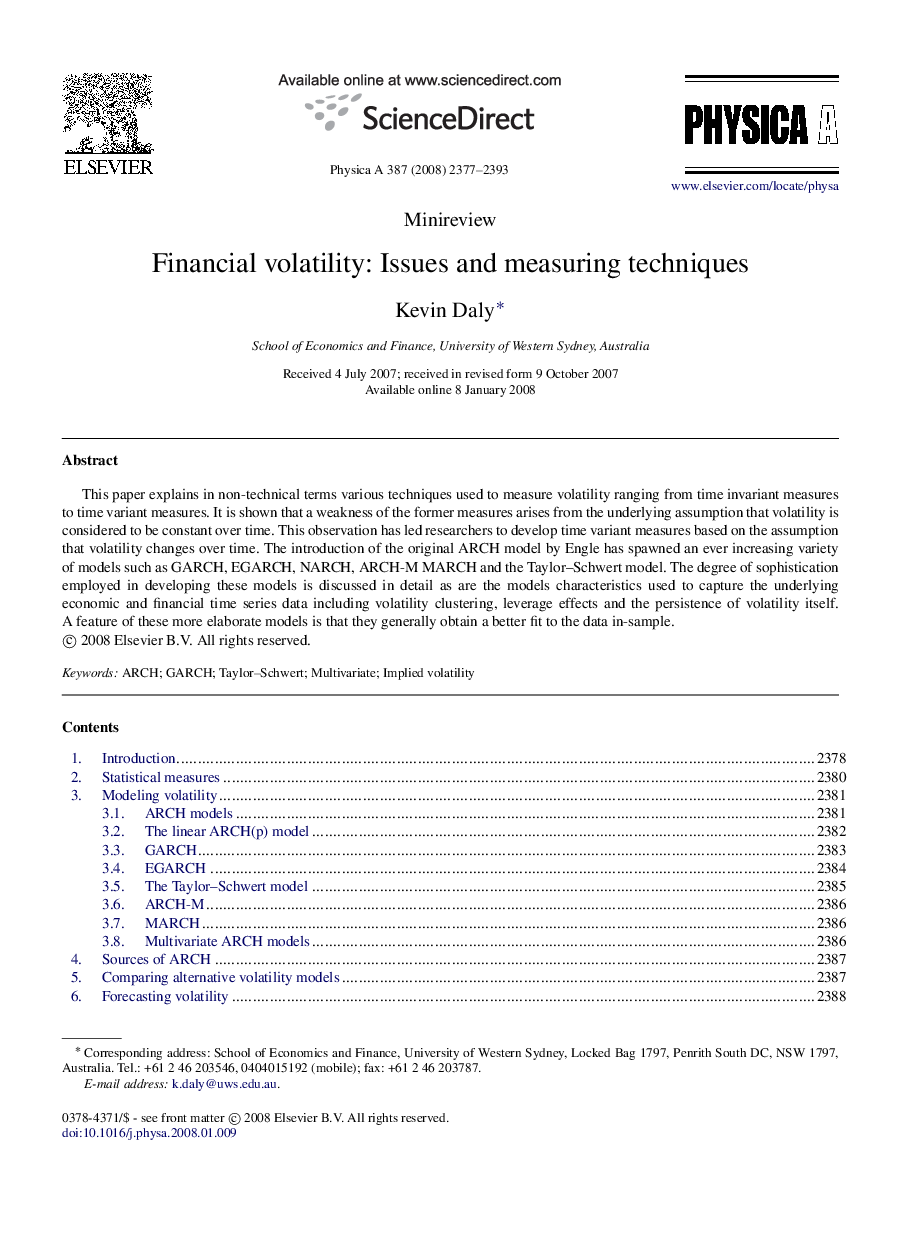| Article ID | Journal | Published Year | Pages | File Type |
|---|---|---|---|---|
| 975133 | Physica A: Statistical Mechanics and its Applications | 2008 | 17 Pages |
This paper explains in non-technical terms various techniques used to measure volatility ranging from time invariant measures to time variant measures. It is shown that a weakness of the former measures arises from the underlying assumption that volatility is considered to be constant over time. This observation has led researchers to develop time variant measures based on the assumption that volatility changes over time. The introduction of the original ARCH model by Engle has spawned an ever increasing variety of models such as GARCH, EGARCH, NARCH, ARCH-M MARCH and the Taylor–Schwert model. The degree of sophistication employed in developing these models is discussed in detail as are the models characteristics used to capture the underlying economic and financial time series data including volatility clustering, leverage effects and the persistence of volatility itself. A feature of these more elaborate models is that they generally obtain a better fit to the data in-sample.
